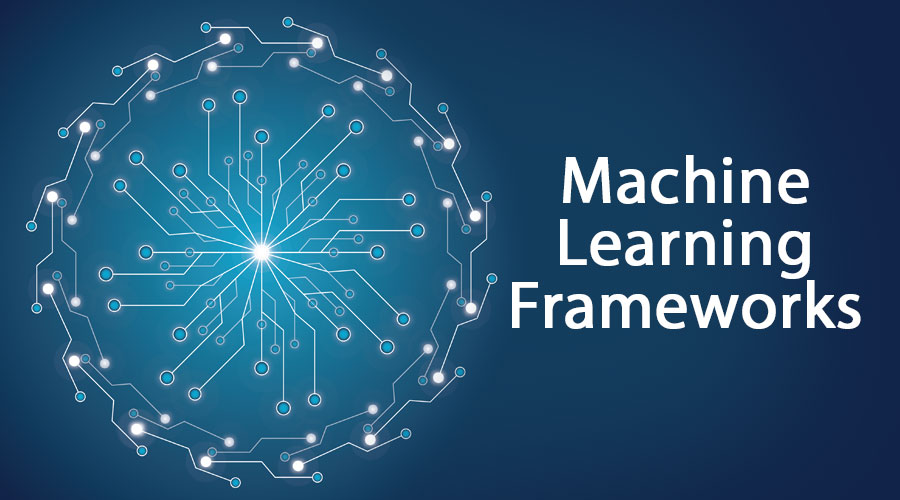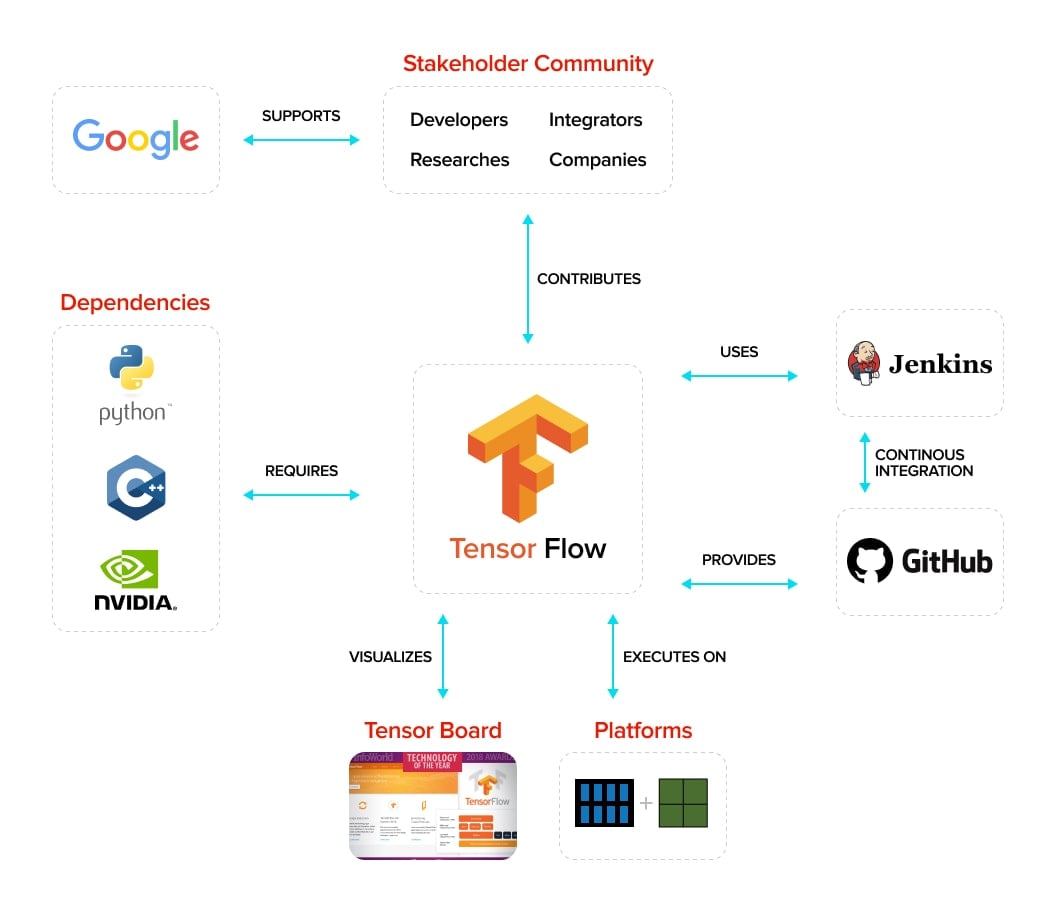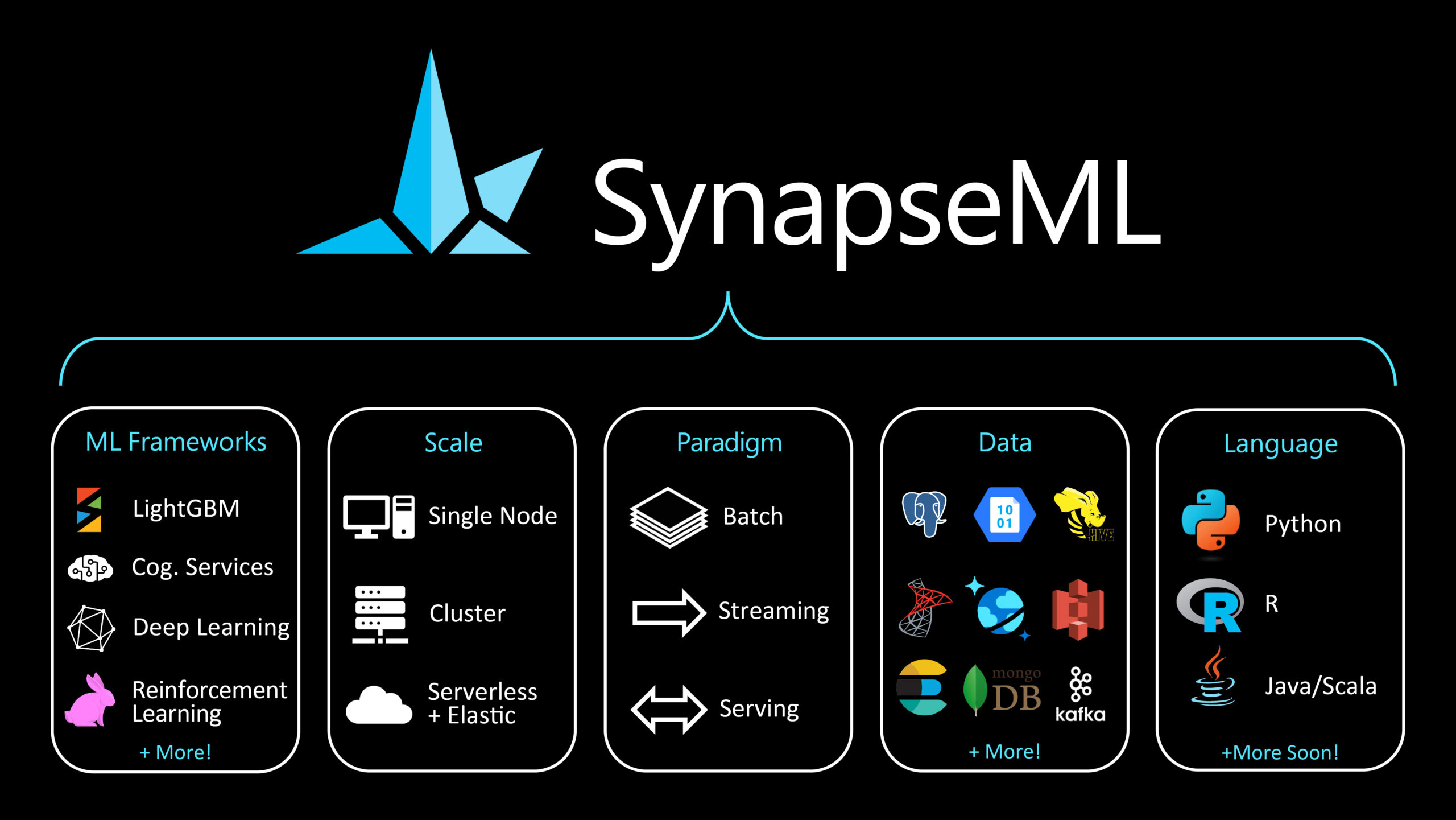Understanding Cloud-based Machine Learning Frameworks
Cloud-based machine learning (ML) frameworks have become an integral part of modern data science, empowering data scientists and organizations to efficiently develop, deploy, and scale ML models. These frameworks offer a wide range of benefits, including seamless collaboration, reduced infrastructure costs, and the ability to handle large and complex datasets.
At their core, cloud-based ML frameworks provide a structured environment for managing the entire machine learning lifecycle. They facilitate the process of building ML models, starting from data preprocessing and feature engineering to model training, evaluation, and deployment. By leveraging cloud infrastructure, these frameworks enable users to access vast computational resources on-demand, eliminating the need for local hardware upgrades and maintenance.
Moreover, cloud-based ML frameworks foster a collaborative environment where team members can easily share models, datasets, and computational resources. This collaboration is particularly crucial in data science projects, where multiple stakeholders, such as data engineers, data scientists, and domain experts, need to work together to achieve optimal results.
In addition to collaboration and scalability, cloud-based ML frameworks offer pre-built algorithms, tools, and libraries, further streamlining the model development process. These resources save data scientists significant time and effort, allowing them to focus on problem-solving and innovation rather than reinventing the wheel.

Key Features to Look for in Cloud-based ML Frameworks
When evaluating cloud-based machine learning frameworks, several essential features should be considered to ensure seamless model development and deployment. These features include scalability, ease of use, compatibility with various data sources, and integration with other cloud services.
Scalability
Scalability is a critical factor in cloud-based ML frameworks, as it enables users to handle increasing data volumes and computational demands. Scalable frameworks can automatically allocate and manage resources, ensuring smooth performance even when working with large and complex datasets.
Ease of Use
An intuitive user interface and clear documentation can significantly reduce the learning curve for cloud-based ML frameworks. Ease of use is particularly important for beginners, as it allows them to focus on learning machine learning concepts rather than grappling with complicated tools and workflows.
Compatibility with Various Data Sources
Cloud-based ML frameworks should support connections to various data sources, including structured databases, unstructured data stores, and streaming data platforms. This compatibility ensures that data scientists can work with diverse data types and structures, promoting innovation and flexibility in model development.
Integration with Other Cloud Services
Seamless integration with other cloud services, such as data storage, analytics, and visualization tools, can enhance the functionality and efficiency of cloud-based ML frameworks. Integrated platforms enable users to access a wide range of resources and services, streamlining the model development process and promoting collaboration.
By considering these key features, data scientists can make informed decisions when selecting a cloud-based machine learning framework that best suits their project requirements and team expertise.
Top Cloud-based Machine Learning (ML) Frameworks Compared
Choosing the right cloud-based machine learning framework is crucial for efficient model development and deployment. Among the leading platforms, Google’s TensorFlow, Microsoft’s Azure ML, and Amazon’s SageMaker stand out for their unique features and capabilities. This section compares these three frameworks, highlighting their strengths and weaknesses to help you make an informed decision.
Google’s TensorFlow
TensorFlow is an open-source, scalable ML framework compatible with various programming languages, including Python, C++, and Java. Its flexible architecture allows users to create custom ML models and deploy them across multiple platforms, from local machines to cloud environments. TensorFlow’s strong community support and extensive documentation make it an excellent choice for both beginners and experienced data scientists.
Microsoft’s Azure ML
Azure ML is a user-friendly, end-to-end ML development platform that offers drag-and-drop functionality and seamless integration with Microsoft’s cloud ecosystem. Its intuitive interface and pre-built algorithms make it an ideal choice for beginners, while advanced users can leverage its compatibility with popular data science languages like Python and R. Azure ML also supports automated machine learning, enabling users to build models more efficiently.
Amazon’s SageMaker
SageMaker is a fully-managed ML platform designed for rapid model deployment and handling large datasets. It provides pre-built algorithms, pre-configured containers, and one-click model training, allowing data scientists to focus on model development rather than infrastructure management. SageMaker also supports custom ML models and integrates with other AWS services, such as Amazon S3 for data storage and Amazon Kinesis for real-time data processing.
When selecting a cloud-based machine learning framework, consider factors such as project requirements, team expertise, and budget constraints. TensorFlow, Azure ML, and SageMaker each offer unique advantages, so carefully evaluate their features and capabilities to determine which platform best suits your needs.

Google’s TensorFlow: An Open-Source Solution for Scalable ML
Google’s TensorFlow is a popular open-source machine learning (ML) framework that offers scalability, flexibility, and robust community support. Its compatibility with various programming languages, versatile deployment options, and extensive library of ML models make it a powerful tool for data scientists and researchers.
Compatibility with Programming Languages
TensorFlow supports multiple programming languages, including Python, C++, and Java, enabling developers to choose the language that best suits their needs. Python, in particular, is widely used due to its simplicity and extensive data science libraries, making TensorFlow an accessible and versatile ML framework.
Versatile Deployment Options
TensorFlow’s flexible architecture allows users to deploy ML models across various platforms, from local machines to cloud environments. Users can leverage cloud services like Google Cloud Platform (GCP) and TensorFlow Enterprise for additional features and support, ensuring seamless integration with existing infrastructure.
Strong Community Support
TensorFlow boasts a large and active community of developers and researchers, contributing to its extensive documentation, tutorials, and examples. This strong community support facilitates learning and problem-solving, enabling users to overcome challenges and make the most of TensorFlow’s capabilities.
Limitations of TensorFlow
Despite its advantages, TensorFlow has some limitations. For instance, its learning curve can be steep, especially for beginners without prior ML experience. Additionally, TensorFlow’s performance may suffer when working with smaller datasets, as its design focuses on large-scale, distributed computing.
In conclusion, Google’s TensorFlow is a powerful and scalable cloud-based machine learning framework, offering compatibility with various programming languages, versatile deployment options, and strong community support. However, users should consider its limitations and weigh them against their project requirements before making a decision.

Microsoft’s Azure ML: A User-Friendly Platform for End-to-End ML Development
Microsoft’s Azure Machine Learning (Azure ML) is a cloud-based machine learning framework that offers an intuitive interface, drag-and-drop functionality, and seamless integration with Microsoft’s cloud ecosystem. This user-friendly platform is suitable for both beginners and experienced data scientists, enabling efficient model development and deployment.
Intuitive Interface and Drag-and-Drop Functionality
Azure ML’s intuitive interface and drag-and-drop functionality simplify the process of building, training, and deploying machine learning models. Users can easily create ML pipelines, experiment with different algorithms, and visualize the results without requiring extensive programming expertise.
Seamless Integration with Microsoft’s Cloud Ecosystem
Azure ML integrates seamlessly with Microsoft’s cloud services, such as Azure Storage, Azure Kubernetes Service (AKS), and Azure DevOps, allowing users to leverage these tools for data management, container orchestration, and continuous integration and delivery (CI/CD). This integration enables a smooth end-to-end machine learning workflow, from data preparation to model deployment.
Ideal for Beginners and Experienced Data Scientists
Azure ML caters to both beginners and experienced data scientists. For those new to machine learning, the platform’s user-friendly interface and extensive documentation provide an accessible starting point. Meanwhile, experienced data scientists can benefit from advanced features, such as automated machine learning, MLOps, and support for custom Docker containers.
Limitations of Azure ML
Despite its advantages, Azure ML has some limitations. For instance, users may encounter higher costs when using Azure services compared to other cloud providers. Additionally, while Azure ML supports various open-source ML libraries, it may not offer the same level of compatibility as other cloud-based ML frameworks.
In conclusion, Microsoft’s Azure ML is a user-friendly cloud-based machine learning framework that offers an intuitive interface, drag-and-drop functionality, and seamless integration with Microsoft’s cloud ecosystem. This platform is well-suited for both beginners and experienced data scientists, although users should consider its limitations before making a decision.

Amazon’s SageMaker: A Fully-Managed Platform for Rapid ML Deployment
Amazon SageMaker is a cloud-based machine learning framework designed to simplify model deployment, handle large datasets, and provide pre-built machine learning algorithms. These features enable data scientists to focus on model development rather than infrastructure management.
Simplified Model Deployment
SageMaker streamlines the model deployment process by offering one-click deployment and automatic scaling. This allows data scientists to quickly deploy models and efficiently manage resources, ensuring optimal performance and minimal downtime.
Handling Large Datasets
Amazon SageMaker is built to handle large datasets, providing users with the ability to pre-process and transform data before training models. This capability is particularly useful for organizations working with big data, as it enables efficient data management and reduces the time and resources required for model training.
Pre-built Machine Learning Algorithms
SageMaker offers a wide range of pre-built machine learning algorithms, covering various use cases such as regression, classification, clustering, and deep learning. These pre-built algorithms can help data scientists save time and resources when developing and deploying machine learning models.
Limitations of Amazon SageMaker
Despite its advantages, Amazon SageMaker has some limitations. For instance, users may encounter higher costs when using Amazon services compared to other cloud providers. Additionally, while SageMaker supports various open-source ML libraries, it may not offer the same level of compatibility as other cloud-based ML frameworks.
In summary, Amazon’s SageMaker is a fully-managed cloud-based machine learning framework that simplifies model deployment, handles large datasets, and provides pre-built machine learning algorithms. This platform is an excellent choice for data scientists looking to streamline model development and deployment while leveraging Amazon’s extensive cloud ecosystem.
How to Choose the Right Cloud-based ML Framework for Your Project
Selecting the most suitable cloud-based machine learning framework for your project is crucial for efficient model development and deployment. To make an informed decision, consider the following factors:
Project Requirements
Assess your project’s specific needs, such as the type of machine learning tasks, required algorithms, and infrastructure. This evaluation will help you determine which framework offers the best compatibility and features for your project.
Team Expertise
Consider the expertise of your data science team when selecting a cloud-based machine learning framework. If your team is proficient in a particular programming language or has experience with a specific framework, it may be more efficient to choose a framework that aligns with their skills.
Budget Constraints
Evaluate the cost of using different cloud-based machine learning frameworks, as pricing structures and resource usage can vary significantly. Ensure that the chosen framework fits within your project’s budget constraints.
Scalability
Determine whether the framework can scale to accommodate your project’s growing data and model complexity. Scalability is essential for long-term project success and should be a key consideration when choosing a cloud-based machine learning framework.
Integration with Other Cloud Services
Consider the compatibility of the framework with other cloud services you may be using, such as data storage, data processing, or visualization tools. Seamless integration can streamline your workflow and improve overall efficiency.
Community Support and Documentation
Evaluate the community support and documentation available for each framework. Comprehensive resources can help your team overcome challenges and learn new skills, ensuring a smoother development process.
In conclusion, choosing the right cloud-based machine learning framework for your project involves careful consideration of various factors, including project requirements, team expertise, budget constraints, scalability, integration with other cloud services, and community support. By weighing these factors, you can select a framework that best fits your project’s needs and sets your team up for success.
Best Practices for Leveraging Cloud-based ML Frameworks
Cloud-based machine learning (ML) frameworks offer numerous benefits, including scalability, ease of use, and seamless integration with various data sources and cloud services. To maximize the potential of these frameworks, consider the following best practices:
Effective Data Management
Organize and preprocess your data efficiently to ensure smooth model development and deployment. This includes data cleaning, normalization, and splitting datasets into training, validation, and testing sets. Utilize cloud-based storage solutions to manage large datasets and facilitate collaboration among team members.
Model Validation and Evaluation
Perform thorough model validation and evaluation to ensure that your models meet performance expectations. Use cross-validation techniques, such as k-fold cross-validation, to assess model performance and avoid overfitting. Additionally, consider using various performance metrics, such as accuracy, precision, recall, and F1 score, to evaluate model performance from different perspectives.
Collaboration and Version Control
Promote collaboration among team members by using version control systems and collaborative tools provided by cloud-based machine learning frameworks. This enables teams to work together more efficiently, track changes, and maintain reproducibility in model development and deployment.
Monitoring and Maintenance
Regularly monitor and maintain your models in production to ensure optimal performance. This includes tracking model performance over time, addressing concept drift, and updating models as needed. Utilize cloud-based monitoring tools and alerts to stay informed about model performance and potential issues.
Security and Compliance
Ensure that your cloud-based machine learning framework adheres to security best practices and complies with relevant regulations. This includes securing data access, implementing encryption, and maintaining audit trails. Familiarize yourself with the security features provided by your chosen framework and ensure that your team follows established security protocols.
Continuous Learning and Improvement
Stay up-to-date with the latest advancements in machine learning and cloud-based frameworks by engaging in continuous learning and improvement. Participate in online courses, attend workshops and conferences, and engage with the machine learning community to expand your knowledge and skills.
In conclusion, cloud-based machine learning frameworks offer numerous benefits and opportunities for data scientists. By following best practices such as effective data management, thorough model validation, collaboration, monitoring, security, and continuous learning, you can maximize the potential of these frameworks and drive successful machine learning projects.

